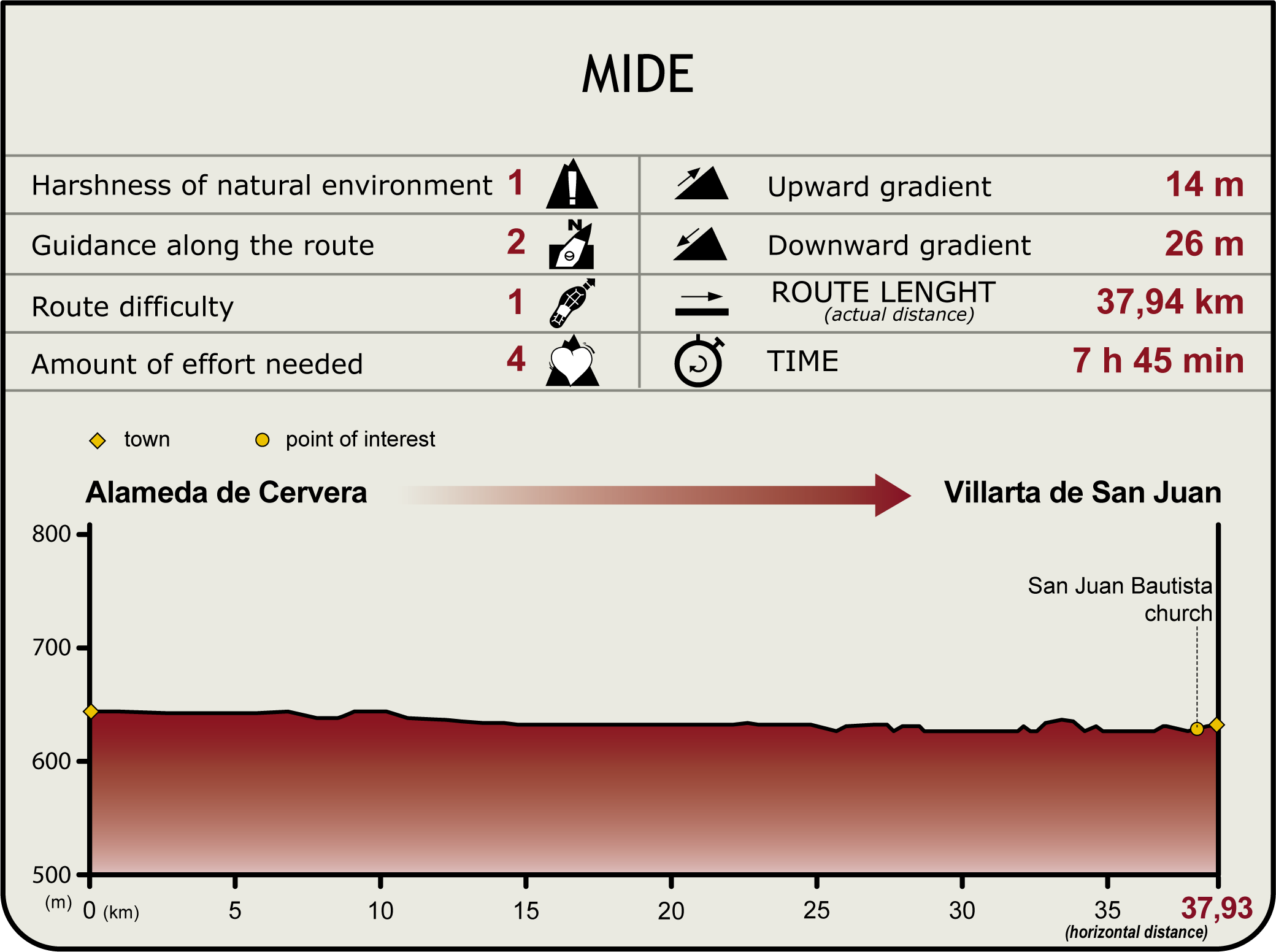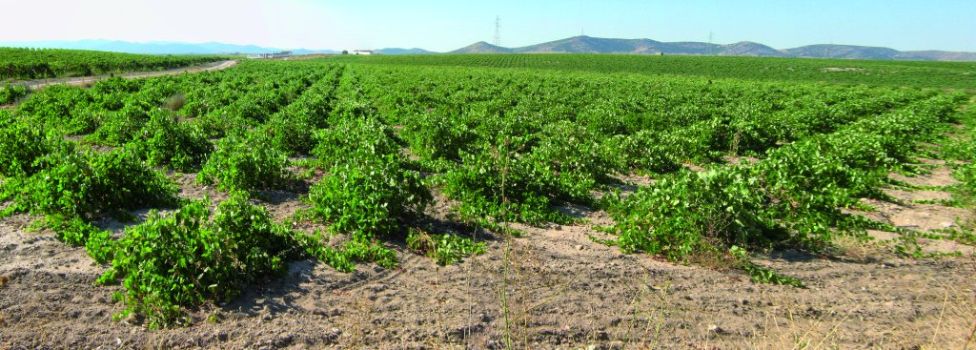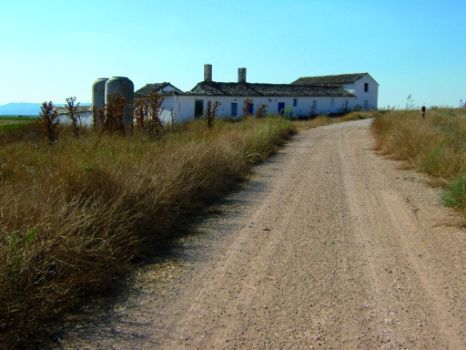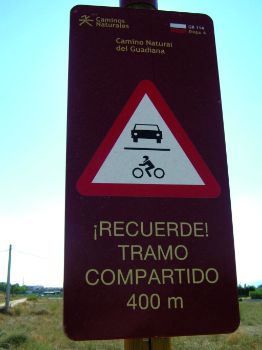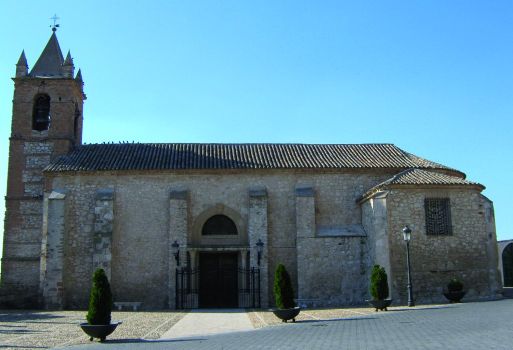Net of Natural
Trails

Stage 4: Alameda de Cervera - Villarta de San Juan
Description
Amidst melon patches, vineyards and olive groves
This Stage of the Trail traverses through large vineyards and melon patches, as well as olive groves and fields of grain that bring different hues of green to the landscape throughout the year, along with brownish-yellow colour of grains in the summer.

The Stage begins at Alameda de Cervera Rest Area, from where it runs towards the River Guadiana, crossing the bridge to the right bank. The route crosses the overpass on the CM-400 to continue straight ahead. About 800 m further on, a slip road to the left crosses another bridge on the Guadiana. A paved road to the right leads to Los Batanes farmstead. Past the farm, the Nature Trail becomes a dirt road that runs on a flat terrain amongst crops, primarily vineyards and melon patches.
The Stage continues straight ahead, through a railroad underpass, until it comes to a sharp bend to the left where a number of derelict houses, known as Casas de los Tejeros, still stand. Keeping to the right, the route arrives at a fork. The Trail continues through vineyards and small houses that belong to the landowners. Further on, it reaches Aldea de Villacentenos, a group of derelict houses, after which the road branches to the right between grain fields and vineyards.

About 1 kilometre later, the route arrives at an overpass on the CM-3107, located 27 km from Villarta de San Juan. The Stage continues along a farm road flanked by vineyards until it arrives at a small pine forest. The flat topography allows the traveller to enjoy the landscape, which is increasingly dominated by large extensions of cereal crops dotted with a few holm oaks (Quercus ilex). The Trail turns sharply to the left, venturing now through a landscape characterised by the intense green of cereal in spring, brownish-yellow hues in summer, browns in autumn and soft, wet and brilliant grey in winter.
The route reaches another sharp turn, this time to the right, and continues along a long straight path. Further on, the Stage drifts to the left along a slightly winding path in very good condition, then turns left again onto a straight path that runs parallel to the previous one. The route skirts around Ponches de Bolsa farmstead, then turns right onto a path to a fork with a very sharp bend to the left that leads directly to the Casa del Marqués. The neighbouring farmsteads have vineyards and carob plantations.

Soon after, the Trail continues along the path to the right, leading to another fork, where it takes again the right branch that ventures into fields of saffron. Attention should be paid at this junction to avoid taking the farm road to the left, which is larger and in very good conditions.
The Trail continues along the path. After a short detour to the right, it reaches an overpass on the CR-1341. The signs indicate that Villarta is now 12 km away. On the opposite side of the road is a huge rock that brings colour to the landscape. For about 1.5 km, the Trail runs parallel to River Cigüela until it reaches its banks. The River Cigüela runs through a loamy clay basin with low permeability. It has a very irregular flow regime due to highly variable rainfall.

From here, the Stage drifts away from the river, winding through large vineyards and olive groves. The path turns right at one of the derelict houses at Casas de Quiterio, and further on, merges with another path from the left. However, the Trail continues straight ahead to the next junction.
The Trail drifts to the right towards a house with blue doors and two large earthen jars, where it turns left onto Colada de las Carretas that leads to Villarta de San Juan.
A paved road near the municipal landfill is shared with motorised vehicles for about 400 metres. In order to reach Villarta de San Juan, the Trail must cross the overpass over the A-4, Autovía del Sur, which leads to the town.
Stage 4 ends at Villarta de San Juan's main road, on the corner with Iglesias Street, where one can visit the Church of San Juan Bautista. The square and, in particular, the 17th century clock tower, are worth visiting.
Sites of interest
Profile
